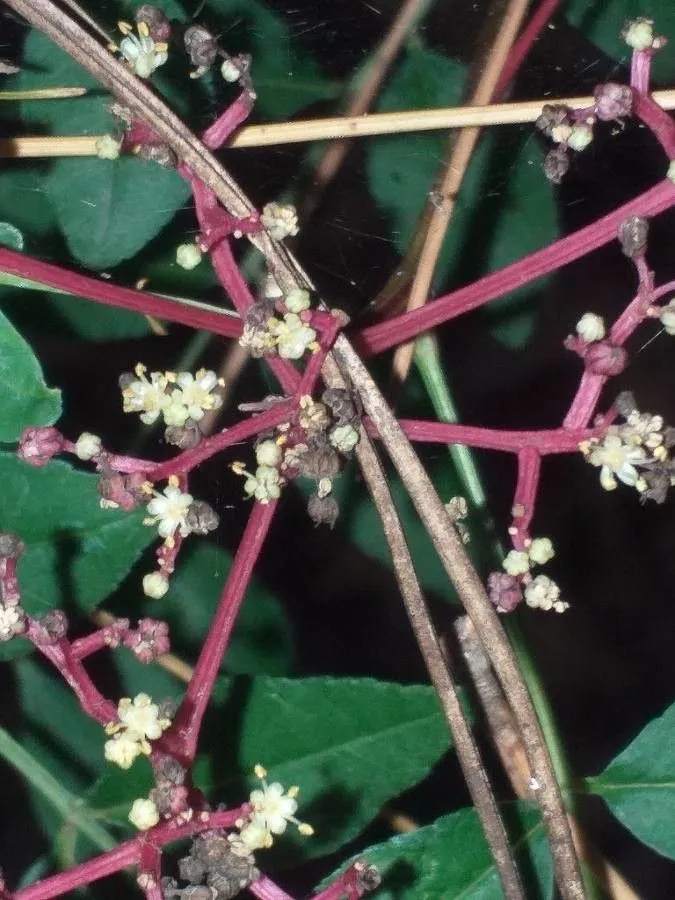
Author: Siebold & Zucc.
Bibliography: Abh. Math.-Phys. Cl. Königl. Bayer. Akad. Wiss. 4(2): 137 (1845)
Year: 1845
Status: accepted
Rank: species
Genus: Zanthoxylum
Vegetable: False
Observations: C. & E. China to Temp. E. Asia
Sichuan-pepper is a unique and flavorful spice integral to the culinary traditions of several East Asian cultures. Scientifically known as Zanthoxylum schinifolium, this plant belongs to the Rutaceae family. It finds its roots in a geographical range that extends from Central and Eastern China to temperate parts of Eastern Asia. The usage of Sichuan-pepper is particularly prominent in Chinese cuisine, especially in Sichuan province, where it imparts a distinctive, mouth-numbing sensation and a citrusy aroma to a variety of dishes.
Sichuan-pepper’s lineage can be traced back to a seminal work authored by Siebold and Zuccarini, which was published in the scientific journal Abhandlungen der Mathematisch-Physikalischen Classe der Königlich Bayerischen Akademie der Wissenschaften in 1845. This publication marked a significant step in the formal classification and botanical documentation of the species. Since then, Sichuan-pepper has been appreciated not just for its culinary applications but also for its medicinal properties.
The plant itself is a deciduous shrub or small tree, typically found in woodlands and mountainous regions. It produces small, reddish-brown berries that are harvested and dried to create the spice. These berries are unique not just for their taste but also for their complex composition, including essential oils and alkaloids that contribute to their distinctive flavor profile.
In terms of culinary use, Sichuan-pepper can be employed in various forms, including whole, powdered, or as an oil infusion. It is a staple in classic Chinese dishes such as Mapo Tofu and Kung Pao Chicken, where its numbing, tingling effect complements the heat of chili peppers, creating a harmonious balance known in Sichuan cuisine as “málà” (numbing-spicy). Beyond the culinary world, it has been traditionally used in Chinese medicine to treat ailments such as digestive issues and pain.
Overall, Sichuan-pepper symbolizes a fascinating intersection of culinary art, botany, and traditional medicine, reflecting the rich cultural heritage of the regions it hails from.
Eng: sichuan-pepper
En: Sichuan-pepper, Qing hua jiao
Zh: Qing hua jiao
Ja: Inu-zanshō
Ko: Sanchonamu
© copyright of the Board of Trustees of the Royal Botanic Gardens, Kew.
Taken Oct 28, 2020 by Maarten Vanhove (cc-by-sa)
Taken Oct 28, 2020 by Maarten Vanhove (cc-by-sa)
Taken Aug 28, 2022 by KP Laer (cc-by-sa)
Taken Jan 9, 2022 by Michael Pavlíček (cc-by-sa)
Taken Aug 16, 2022 by Joe Cowley (cc-by-sa)
Taken Oct 28, 2020 by Maarten Vanhove (cc-by-sa)
Taken Oct 28, 2020 by Maarten Vanhove (cc-by-sa)
Taken Sep 14, 2021 by Michael Pavlíček (cc-by-sa)
Taken Jan 9, 2022 by Michael Pavlíček (cc-by-sa)
Family: Myrtaceae Author: (F.Muell.) K.D.Hill & L.A.S.Johnson Bibliography: Telopea 6: 402 (1995) Year: 1995 Status:…
Family: Rubiaceae Author: Pierre ex A.Froehner Bibliography: Notizbl. Bot. Gart. Berlin-Dahlem 1: 237 (1897) Year:…
Family: Sapindaceae Author: Koidz. Bibliography: J. Coll. Sci. Imp. Univ. Tokyo 32(1): 38 (1911) Year:…
Family: Asteraceae Author: A.Gray Bibliography: Pacif. Railr. Rep.: 107 (1857) Year: 1857 Status: accepted Rank:…
Family: Fabaceae Author: Medik. Bibliography: Vorles. Churpfälz. Phys.-Ökon. Ges. 2: 398 (1787) Year: 1787 Status:…
Family: Aspleniaceae Author: (Cav.) Alston Bibliography: Bull. Misc. Inform. Kew 1932: 309 (1932) Year: 1932…